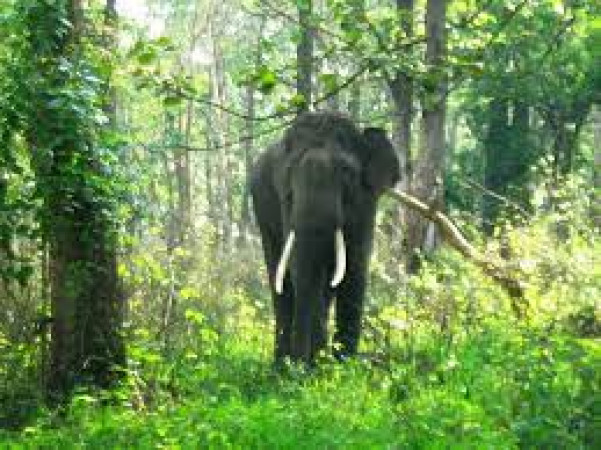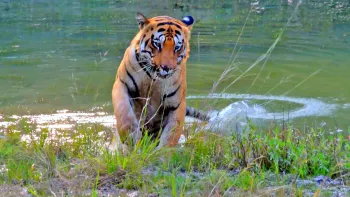
Nilgiri Biosphere Reserve
Duration
3 to 7 Days
3 to 7 Days
Best time to visit
Oct-Mar
Oct-Mar
Theme
Hill Station, Wildlife
Hill Station, Wildlife
Nilgiri Biosphere Reserve Travel Guide
The Nilgiri Biosphere Reserve is a UNESCO World Heritage Site located in the Western Ghats of India. Renowned for its rich biodiversity and stunning landscapes, the reserve is a paradise for nature lovers and wildlife enthusiasts. Home to numerous endangered species and indigenous tribes, the region holds immense ecological significance. The Nilgiri Biosphere Reserve also boasts a fascinating history, with ancient tribes and colonial influences shaping its cultural heritage.Top Attractions in Nilgiri Biosphere Reserve
1. Nilgiri Mountain Railway 2. Mudumalai National Park 3. Doddabetta Peak 4. Sim's Park 5. Pykara LakeNilgiri Biosphere Reserve is Famous for
Its diverse flora and fauna, including the majestic Nilgiri tahr and lush tea plantations.Top Attractions in Nilgiri Biosphere Reserve
- Nilgiri Mountain Railway - Mudumalai National Park - Doddabetta Peak - Sim's Park - Pykara LakeWhat's Great about Travelling to Nilgiri Biosphere Reserve?
- Nature enthusiasts seeking biodiversity - Adventure seekers looking for trekking opportunities - History buffs interested in colonial heritageWhat's Not So Great about Travelling to Nilgiri Biosphere Reserve?
- Not ideal for travelers seeking a bustling city experience - Limited nightlife options - Weather can be unpredictable in certain seasonsTravel Tips for Nilgiri Biosphere Reserve
- Carry warm clothing for chilly evenings - Respect local customs and wildlife regulations - Use eco-friendly transportation optionsImportant Nilgiri Biosphere Reserve trip information
- Ideal Duration: 3-5 days to explore major attractions
- Best Time to Visit: October to May for pleasant weather
- Nearby Airports and Railway Stations: Coimbatore Airport and Mettupalayam Railway Station
Total
44,000
*EXCLUDING APPLICABLE TAXES 5.0 Ratings
( 23 Reviews )
( 23 Reviews )
Per Person
21,000
*EXCLUDING APPLICABLE TAXES Per Person
13,000
*EXCLUDING APPLICABLE TAXES Per Person
17,800
*EXCLUDING APPLICABLE TAXES Per Person
15,000
*EXCLUDING APPLICABLE TAXES FAQ's on Nilgiri Biosphere Reserve
Q1: What is the best time to visit Nilgiri Biosphere Reserve?
The best time to visit Nilgiri Biosphere Reserve is during the months of October to May when the weather is pleasant, and the flora and fauna are at their best. Avoid the monsoon season from June to September as heavy rains can affect travel and wildlife sightings. Consider visiting during the winter months of December to February for clear skies and cool temperatures.
Q2: Do I need a visa to travel to Nilgiri Biosphere Reserve?
Tourists visiting Nilgiri Biosphere Reserve do not require a separate visa as it is part of India. However, international travelers should check the visa requirements for entering India based on their nationality and duration of stay. Ensure your passport is valid for at least six months beyond your intended departure date from India.
Q3: What are the must-visit attractions in Nilgiri Biosphere Reserve?
The must-visit attractions in Nilgiri Biosphere Reserve include the Mudumalai National Park, Bandipur National Park, and Silent Valley National Park. Explore the picturesque hill stations of Ooty and Coonoor, visit the tribal villages to experience local culture, and take a ride on the Nilgiri Mountain Railway for breathtaking views of the Western Ghats.
Q4: Is Nilgiri Biosphere Reserve a safe place to travel?
Nilgiri Biosphere Reserve is considered safe for travelers. However, it is always recommended to take standard precautions such as avoiding isolated areas at night, safeguarding your belongings, and following local guidelines. Be mindful of wildlife encounters in national parks and forests, and always travel with a registered guide for safety.
Q5: What is the local currency in Nilgiri Biosphere Reserve and can I use credit cards?
The local currency in Nilgiri Biosphere Reserve is the Indian Rupee (INR). While credit cards are accepted in major establishments like hotels and restaurants, it is advisable to carry cash for smaller purchases and in remote areas. ATMs are available in towns like Ooty and Coonoor for convenient access to money.
Q6: What is the local cuisine like in Nilgiri Biosphere Reserve?
The local cuisine in Nilgiri Biosphere Reserve is a blend of South Indian flavors with unique hill station influences. Enjoy dishes like dosa, idli, and local delicacies such as Ooty varkey and homemade chocolates. Don't miss trying the aromatic Nilgiri tea and fresh produce from the region. Vegetarian and non-vegetarian options are widely available to cater to different preferences.
Q7: What transportation options are available in Nilgiri Biosphere Reserve?
Transportation options in Nilgiri Biosphere Reserve include public buses, taxis, and rental cars. Explore the region by taking the scenic Nilgiri Mountain Railway or hiring a local guide for wildlife safaris in the national parks. Private taxis are convenient for traveling between towns, while buses offer a budget-friendly way to navigate the hilly terrain. Plan your transportation based on the attractions you wish to visit.
Q8: Are there any cultural norms or etiquette I should be aware of when visiting Nilgiri Biosphere Reserve?
When visiting Nilgiri Biosphere Reserve, respect local customs by dressing modestly, especially when visiting religious sites or tribal areas. Seek permission before taking photographs of locals and avoid intruding on their privacy. Greet people with a respectful "Namaste" and be conscious of environmental conservation efforts by not littering in natural areas. Learn about the traditions of the indigenous tribes and engage with them respectfully to appreciate their way of life. Embrace the diverse cultural heritage of the region with an open mind and a spirit of curiosity.
Q9: I am a travel agent. How can I buy travel leads of Nilgiri Biosphere Reserve?
Register yourself as a travel agent at agents.tripclap.com and then you can buy travel leads to Nilgiri Biosphere Reserve once your account is approved. For more details contact our support team at +91-8069186564 or support@tripclap.com



